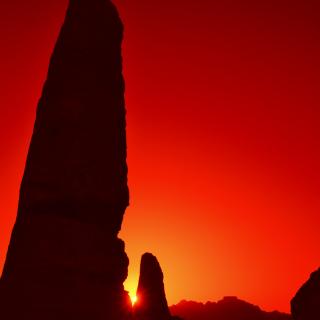Urrutia-Aparicio, M.; González-García, A.C.; Belmonte, J.A.
Referencia bibliográfica
Cosmovisiones
Fecha de publicación:
9
2024
Número de citas referidas
0
Descripción
During the transition from the first to the second millennium, a new artistic and architectural style known as “Romanesque” emerged and developed in the Iberian Peninsula between the 11th and 13th centuries. Many resources were invested in the construction of churches and monasteries, particularly in the regions crossed by the Camino de Santiago. This pilgrimage road followed the existing communication routes between the different Christian kingdoms of the time, and its sacralization was influenced by thegrowing cult of relics and pilgrimages.
Given the abundance of this architectural style in the northern Iberian Peninsula, and especially along the Camino de Santiago, a statistical analysis of its orientation patterns could provide valuable insights into the potential similarities and differences between Christian regions, as well as the use of the Jacobean route as a gateway and means of spreading new currents from Europe.
Numerous examples of astral iconography have been observed while traveling along the Camino Francés and exploring its Romanesque churches. Decorations on tympanums with the sun, moon, and stars, zodiacs on portals with possible solar symbolism, and legends about the Apostle that involve elements of the sky such as the Milky Way are just a few examples. These decorations and legends highlight the importance of the sky and its heavenly bodies in the religious beliefs of the time.
The churches have also yielded a series of fundamental conclusions, thanks to the archaeoastronomical analysis of their orientations, which reveals two main orientation patterns.
The first and most prominent is Easter, both towards the sunrise or sunset. This is a crucial holiday in the Christian liturgical calendar that seems to have influenced the construction of these sacred places in the Romanesque era. The second orientation pattern is towards the equinox, either ecclesiastical or astronomical. However, equinoctial orientations are mostly present in the ancient kingdoms of Leon and Navarre, while Easter appears with more or less predominance in every kingdom. Such differences and similarities provide a basis for evaluating the influence of local previous traditions, new external currents, and even the gradual introduction of the Roman liturgy in the Iberian Peninsula.
The perspective of cultural astronomy on the Camino de Santiago has allowed to highlight an aspect of this sacred cultural landscape that was previously unknown, endowing the Romanesque churches of the route with an astronomical dimension that was previously unnoticed, and providing a novel view on the potential cultural and religious exchanges that took place between the different Christian kingdoms of the Iberian Peninsula during the Romanesque era.
Proyectos relacionados

Arqueoastronomía
Este Proyecto tiene como objetivo fundamental determinar la importancia de la astronomía como parte integrante de la cultura y de la civilización desde el Paleolítico a nuestros días. El interés del grupo se centra, en especial, en los pueblos del antiguo ámbito Mediterráneo desde el Atlántico al Oriente Medio, con una dedicación especial a España
Juan Antonio
Belmonte Avilés